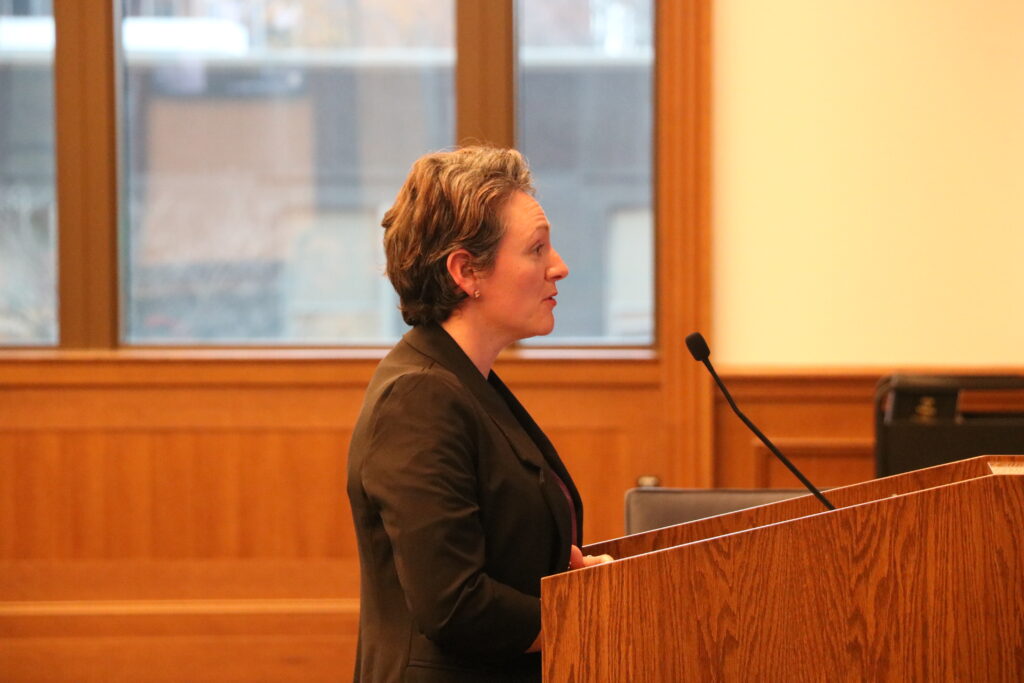
Damola Adamolekun assumed the CEO role at Red Lobster in August, mere months after the seafood chain filed for Chapter 11 bankruptcy. In September, the company announced it would be exiting bankruptcy under Adamolekun’s stewardship. Before joining Red Lobster, he served as CEO of P.F. Chang’s from 2020 to 2023, leading the Asian-inspired food chain through the pandemic and revitalizing a once-struggling brand. But what’s most striking about Adamolekun’s curriculum vitae is not his two successive corner office posts but rather his extraordinary feat of having led two major restaurant chains by the age of 35.
Adamolekun is what one would call a “CEO sprinter,” one of a rarefied cohort of executives who take less than the roughly 24-year average to move from entry-level to the corner suite. What separates these sprinters from the average executive are three main career catapults, says Elena Lytkina Botelho, a partner at management consulting firm ghSmart and leader of its CEO Genome Project. Botelho and her coresearchers analyzed data from 17,000 C-suite executives to examine their career trajectories over 10 years. Together, they identified three career accelerators—or “catapults”—that help professionals fast-track their ascent to the corner office: taking a demotion or pay cut to expand the scope of their responsibilities; making a bold leap within the first decade of their career; and stepping into and successfully resolving a significant mess.
“What’s great about these catapults is they help you get results, get noticed, and get stronger,” Botelho says. Ninety-seven percent of CEO sprinters in the study had at least one catapult, and 50% had at least two. Of the three catapults, the study found that taking a lesser role to broaden one’s skills and responsibilities was by far the most popular, with more than 60% of sprinters having taken a demotion or pay cut at some point in their career. More than a third made a bold career leap, and over 30% led their team through a mess.
Rising to the corner office at an expedited pace often requires some short-term sacrifices. As a result, relying solely on vertical growth and expertise in a single field can hinder an executive’s upward trajectory, says Jane Edison Stevenson, Korn Ferry’s global vice chair of board and CEO services and global leader of board and CEO succession. “Horizontal moves and zigzags are really pivotal,” she says.
In a recent Fortune interview, Xerox CEO Steve Bandrowczak shared a similar sentiment. In 2007, he left his role as Lenovo’s chief information officer to take a sales position two levels below at a Canadian telecommunications company. The position was, in many ways, a step-down and required him to take a large salary cut. “I accepted that role because I had never run a sales team before, and I knew it was important to gain that experience,” he said.
Taking a sizable leap early in one’s career can also accelerate their growth, expose them to transformative challenges, and position them for leadership opportunities sooner. Adamolekun, for example, began his career in investment banking and became a partner at Paulson & Co. by age 27. He led the investment firm’s acquisition of P.F. Chang’s in 2019 and immediately took a seat on the restaurant chain’s board shortly before being named its chief strategy officer. Two years later, he was appointed CEO at age 31.
Approximately 30% of sprinters fall under the third career catapult: inheriting a crisis that requires turnaround. Brian Niccol, Starbucks’ new CEO and its fourth in just two years, has earned a reputation as a fast-food brand savior. A sprinter himself, Niccol became Taco Bell’s CEO in 2015, just 19 years after starting his career in brand management at Procter & Gamble. At Taco Bell, Niccol updated its brand image, launching the popular “Live Más” campaign and the Doritos Locos Taco. “I came to the marketing and innovation role at Taco Bell with big ambitions … And we made the brand more relevant, creative, and youthful,” Niccol wrote in a commentary for Harvard Business Review. In 2017, a struggling Chipotle announced plans to replace its founder with someone who had “demonstrated turnaround expertise” and tapped Niccol to lead the burrito chain.
Understanding the impact of career accelerants is crucial for executives aiming to hasten their rise to leadership. “We see really talented executives missing the opportunity to accelerate their careers because they’re following a more traditional mindset about what the next step might look like,” Botelho says. “They are missing the chance to undertake these catapults, and that feels like an untapped opportunity for folks who are ambitious.”
Additionally, she identifies four must-have skills for a faster path to the CEO seat: deciding with speed and conviction; engaging for impact; proactively adapting to a range of circumstances; and reliably delivering results. While these traits may appear straightforward, excelling in all four is rare, and their simplicity often leads executives to overestimate their abilities. That’s why Botelho and her coresearchers encourage leaders to practice these behaviors with “maniacal consistency,” a process that demands deliberate and sustained effort.
As for soft skills—like confidence, agreeableness, likability, extroversion, and charisma—they will only grow in importance as technology profoundly reshapes the business landscape, says Botelho. However, technical acumen remains essential. “The most powerful leaders I see distinguish themselves by having a vision for how technology can create a competitive edge and by rallying their teams around that vision,” Botelho explains.
To be sure, the speed of a CEO sprinter’s climb carries risks and challenges, but early-career failures can be a learning opportunity and even welcomed by boards who like to see how a candidate navigates obstacles and self-inflicted missteps. “For somebody who aspires to big roles, yes, of course, your wins need to speak for themselves,” says Botelho. ”[But] sometimes the risk is really worth taking even if it doesn’t become a spectacular win.”
This story was originally featured on Fortune.com
EMEA Tribune is not involved in this news article, it is taken from our partners and or from the News Agencies. Copyright and Credit go to the News Agencies, email news@emeatribune.com Follow our WhatsApp verified Channel





